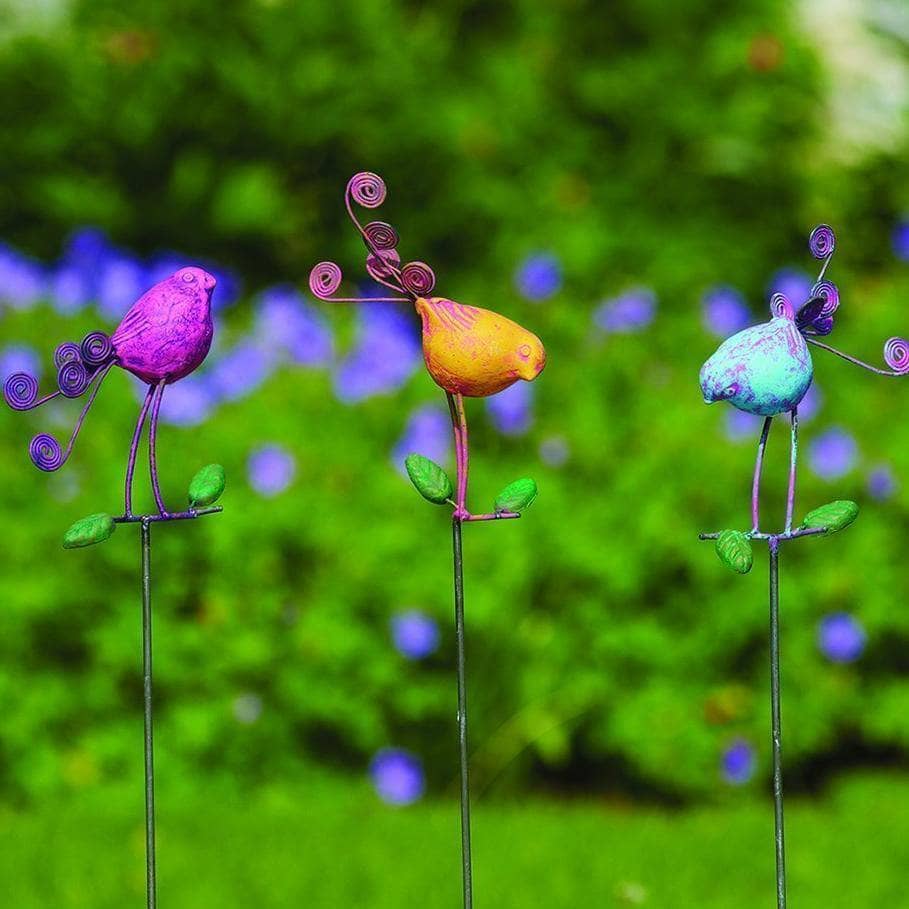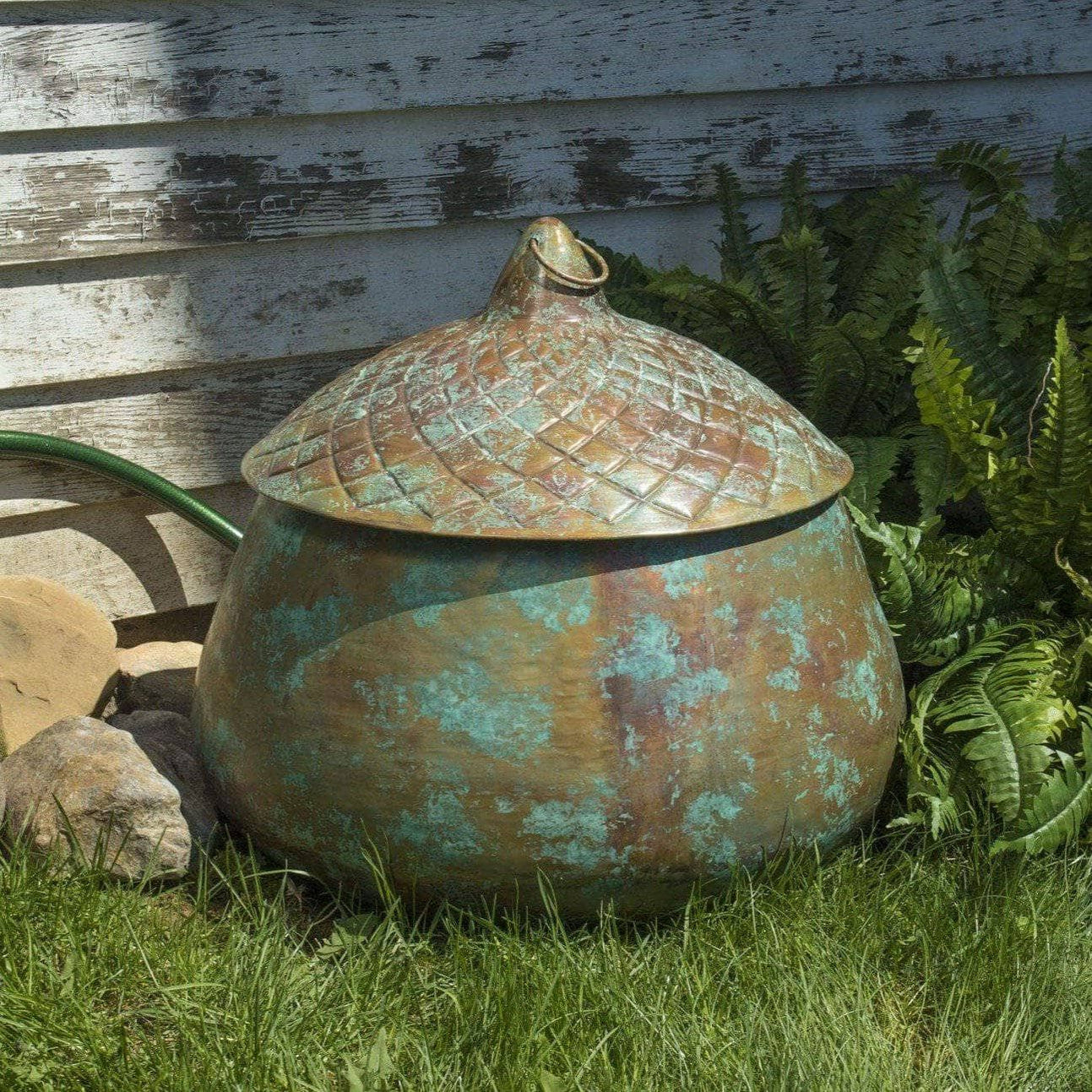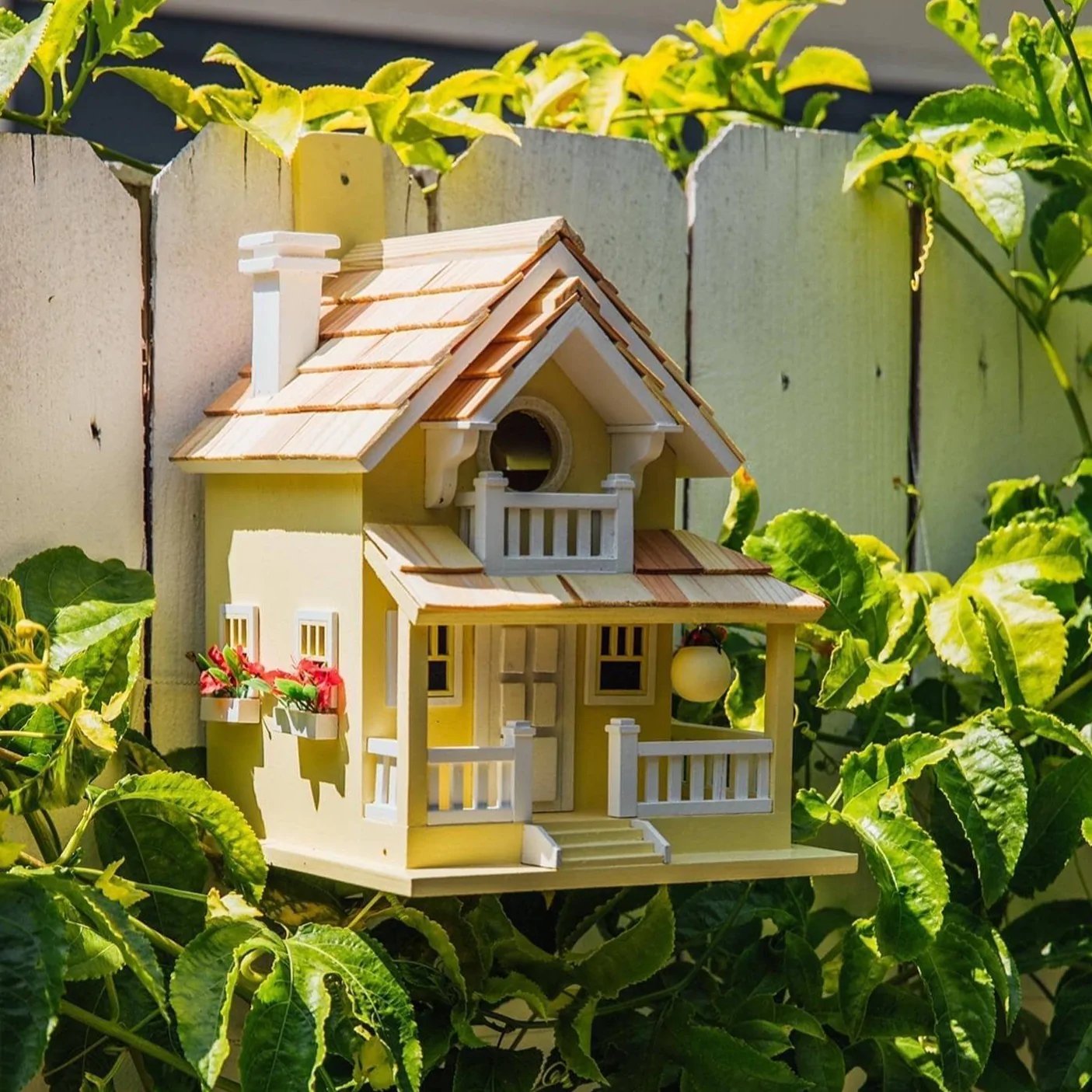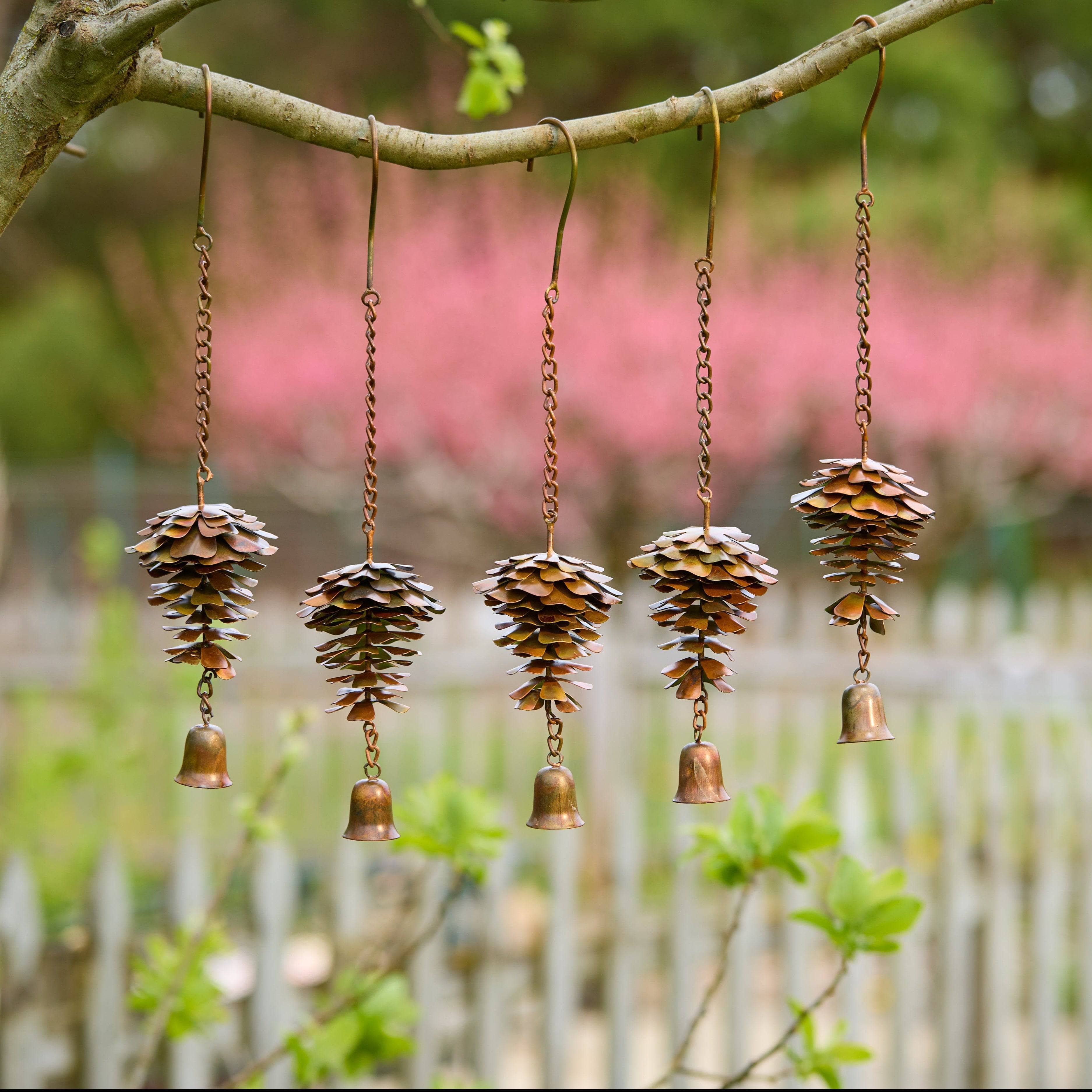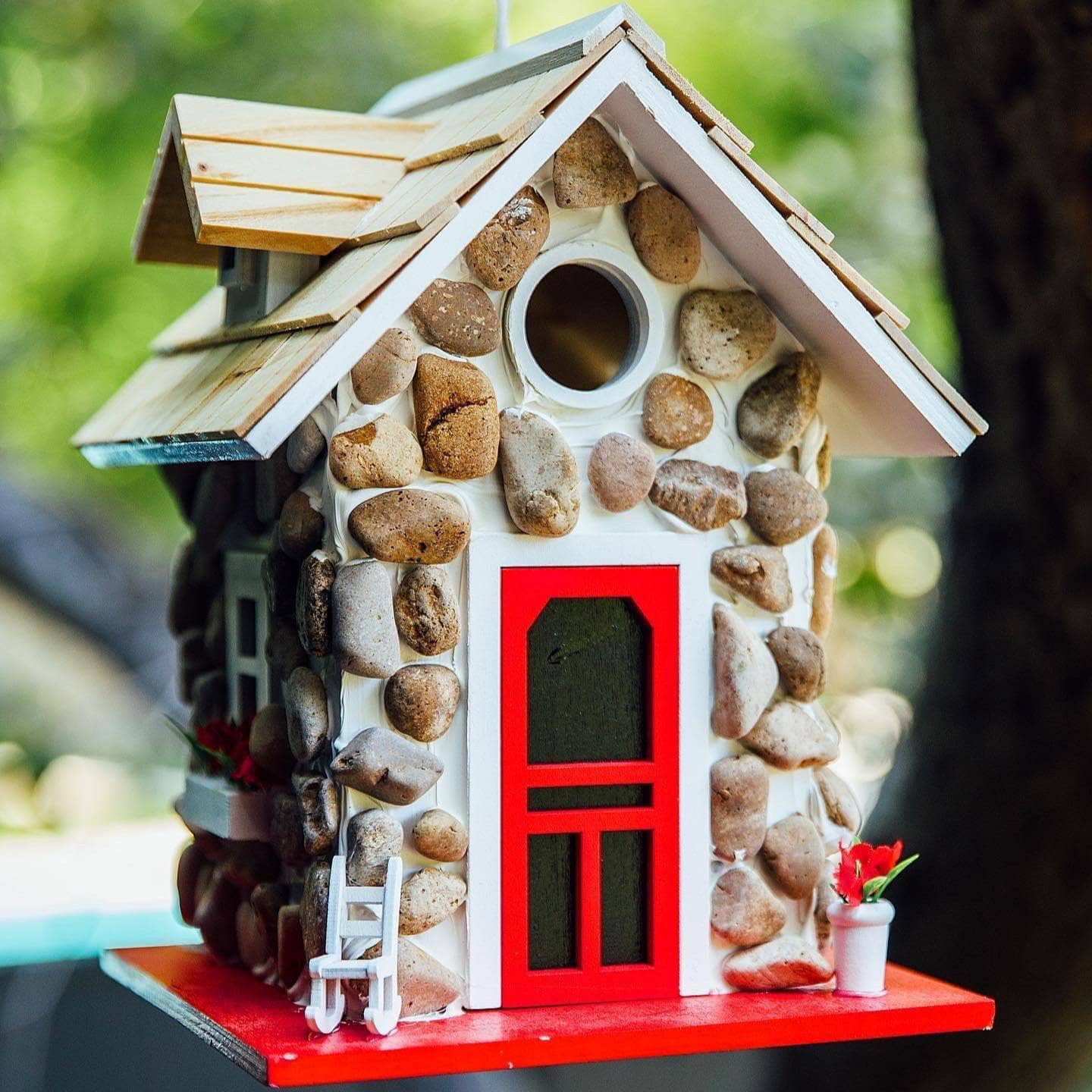
How to Keep Ants Out of Hummingbird Feeder: 10 Must-Know Tips
Share
If you are a hummingbird lover, then you have gone to great lengths to create a blissful space to attract hummingbirds, complete with flower beds, birdbaths, and properly placed hummingbird feeders. You may even delight in creating homemade nectar for your hummingbird feeders.
Everyone loves sugar, right? Hummingbirds and ants (and humans) alike. But we don't want the tiny insects overrunning our garden hummingbird feeders. While hummingbirds do feast on ants, they don't like to mix their savory and sweet. So they will stop feeding on nectar from feeders if ants take over.
When ants invade, they can prevent you from attracting hummingbirds, and they can call upon even more ants to create an ant problem in your garden. Today, we're going to show you how to keep ants out of your hummingbird feeders.
Without further ado, here are 10 tips for how to keep ants out of hummingbird feeder or feeders:
1. Hang your hummingbird feeders with fishing line.

Give the ants a tightrope challenge—with fishing line. Fishing line is naturally very thin—even too thin for ants—and slippery on its own, so it works as a great deterrent for ants trying to climb to the hummingbird feeder. You'll need to make sure the fishing line is strong enough to hold up the weight of your feeder and the resting weight of a hummingbird feeding on its nectar. Then, use the fishing line to hang the hummingbird feeder where you wish.
Fishing line is pretty easy to find in camping or fishing shops, hardware or craft stores, or even online. Make sure you select a fishing line that supports at least 2 pounds of weight and get enough length to cover the height you're hanging your feeder or feeders from. Secure the line tightly to your feeder, and then attach the other end to the pole you're hanging the feeder from.
2. Move the feeder often.
Keep ants on their toes by relocating your hummingbird feeder to different parts of your garden. This will prevent ants from coming back for more—oftentimes, ants will leave behind a scent trail to alert their colony to a delicious food source: sugar water.
Scope out a few spots you can hang the feeder, and move it around from time to time. Hopefully, in combination with a few more of our other feeder tips, this will throw the ants off and keep the ants away. Hummingbirds are mostly adaptable and will be able to find the new feeder location, but make sure that while you're moving the hummingbird feeders to keep ants away, you're not just picking up the hummingbird food source and moving it for no reason.
When the ants come marching and it's time to move your feeder, make sure you keep feeders at least 7 feet apart from each other. And don't move one feeder closer to another just to move it—space them out across your garden. A good place to look is near some small trees if you have them, as hummingbirds like to have safe places to perch or take shelter nearby. And don't move them next to any other birdhouses or birdbaths.
See our interesting article on where hummingbirds live year round.
3. Install an ant moat.
Protect your hummingbird feeder like it's a castle—with an ant moat! An ant moat is perhaps the most popular way to keep ants away from hummingbird feeders. Just like a moat around a castle, an ant moat is a little body of water that protects the hummingbird feeder. The ants will hopefully get stopped in their tracks in the ant moat's water and not be able to make it to the nectar.
Ant moats are usually little cups of water placed above the nectar but are sometimes below or intricately installed within the center of dish-style hummingbird feeders. You can either buy a hummingbird feeder with a built-in ant moat, buy an ant moat that will attach to your hummingbird feeder, or DIY an ant moat at home. (See below for a quick step-by-step!)
Make sure you pay attention in the summer months, as the water in your ant moat will evaporate quickly. Keep the ant moat filled with water to keep ants from getting past it and into the hummingbird feeder. A dry ant moat is, well, no moat at all.
How to build a DIY Ant Moat
If you buy a feeder that doesn't come with a moat installed, you can make your own at home. You can get fancier with nuts and hooks from a hardware store, but today, we'll showyou how to craft an ant moat with some items you already have at home. (Want more information on building a DIY ant moat? Here's a helpful video.)
What you'll need:
- A plastic soda bottle (select a size that makes sense for the size of your feeder)
- Scissors or a utility knife
- A wire coat hanger
- A hot glue gun & hot glue
- A drill with a thin drill bit
How to assemble your moat:
- Remove the label from the plastic soda bottle, and use the scissors or utility knife to cut the top of the bottle off so you are left with a bowl shape with the cap. This bowl will be the moat you fill with water.
- Next, cut off the bottom straight part of the coat hanger.
- Drill a hole through the bottle cap, smaller than the diameter of the coat hanger.
- Push the coat hanger through the hole in the bottle cap and twist the cap onto the top of the bottle.
- Turn the bottle upside down and fill the cap with hot glue. You don't want any leaks in your moat.
- Be very careful not to get glue on the sides of the bottle or it will warp the shape and no longer be a round moat. It could even puncture a hole and render it useless.
- Use a piece of cardboard or a popsicle stick to steady the wire hanger once the glue is in the cap so the hanger remains in the center of your bottle cap.
- Give the glue 5 to 10 minutes to dry fully, bend the ends of your coat hanger in the same direction, and your ant moat is ready to fasten to your feeder!
4. Use an ant guard.

Sometimes, these crafty insects figure out how to build a bridge across an ant moat to get to a hummingbird feeder. Yikes! (But also, pretty brilliant.)
To keep these super ants from crawling over each others' bodies toward your hummingbirds' nectar and feeder, you may want to purchase an ant guard, which contains a light insecticide called Permethrin. Permethrin does not kill ants but deters them and is safe around birds, people, and pets. This is a little extra protection when your ant moat isn't quite doing the trick on its own.
A castle with an ant moat and an ant guard sounds like a hummingbird feeder fortress!
We always recommend trying the natural tricks before resorting to store-bought pesticides, but this is surely safe for your garden and worth a try if your ant problem is feeling out of control.
5. Repair leaks to bird feeders away.
If they smell sweetness, the ants will come. Make sure you monitor your hummingbird feeder for any cracks or leaks. If sugar water is escaping, ants will be attracted to the scent and march on over to the hummingbird feeder immediately. A leak is most often the reason feeders attract ants.
Heat can cause feeders to expand and cause cracking, so check often, especially in warmer weather. You may not want to place your feeder directly in the sun for this reason.
Wind, too, can knock your hummingbird feeder over. And if you hang the feeder back up without checking for damage, you may miss a leak. Tighten loose parts, patch up any leaks, and replace your feeder if it's truly beyond repair.
If there are too many leaks, your hummingbird feeder will become a buffet for ants before you know it!
6. Clean your feeder often.
Give the hummingbirds a fine dining experience--seriously. It's important to keep your feeder very clean to prevent ants from crawling in and taking over. It's also important to keep the nectar from going bad and giving your hummingbirds clean nutrients.
Hummingbird feeders should be wiped down daily, when you refill them with nectar. As a ritual, take a short amount of time to clean your feeder inside and out... and check for leaks before filling them with new nectar. Wipe down your moat when you refill it, too.
You'll find the best ways to keep ants out of hummingbird feeders are quite like keeping ants out of anything: keep things clean! Ants love a sweet, sticky mess, don't they? Maybe with one exception. (More on that a bit later.)
Another reason to clean your feeder frequently? Insects besides ants. Because it's not just ants that'll infiltrate your bird feeder. It's lots of other bugs, too. Bees and wasps are also super fans of hummingbird nectar, and they both have a pretty strong advantage over our crafty ant friends: they can fly! Your feeder might attract bugs like moths, flies, and hornets as well. No one wants all these pests up in their bird feeders.
Keep it simple. Look for feeders that are easy to clean, either simple in structure or with parts that disassemble. Many Happy Gardens feeders may be fully disassembled for easy cleaning and come with a port brush to keep every little feeding station sanitary for our bird friends, which makes life super easy! Rinse your feeder with non-toxic dish soap and warm water and wipe dry. If you miss a couple days or find there is any caked-on nectar, mix the dish soap with hot water and soak the feeder for an hour or two, and it should loosen any buildup.
7. Try bay leaves or mint leaves.

So ants are a bit like kids: they love dessert, but when it comes to greens... not so much. Sp repel ants with plants. Ants detest the scent of bay leaves, so placing or rubbing bay leaves on or around your hummingbird feeder is an excellent way to keep ants away. Mint leaves are another natural ant repellent you can use to protect your feeder.
If your hummingbird feeder is hanging from a pole, tie some bay or mint leaves on it, or tie the leaves to your fishing line. Better yet, plant mint near where you're placing your hummingbird feeder to keep ants from taking the chance.
It's incredibly easy to grow mint in your garden. In fact, mint can take on a life of its own. Prevent ants from bugging your hummingbirds by getting some mint seeds and plopping them where you want them to grow—but not overgrow—in a windowsill, an herb garden, or even a little pot on your patio.
Mint simply needs moisture and rich soil to grow, and it will do its thing. The plant does like a bit of shade, but it can grow in full sunlight as long as you keep the soil nice and moist.
8. Hang your feeder above water.
Ants are no swim champs. We know ants can crawl, climb, and make bridges out of each other. But they aren't so great in water (remember ant moats?). If you are lucky enough to have a fountain or a pond or any body of water in your garden, this would be a great place to position your hummingbird feeder. A birdbath is probably the best of both worlds as it will attract hummingbirds too.
While ants can try to cross a small body of water like an ant moat, they won't be so bold with something wider or deeper. There are some great mounting tools, like a clamp pole design, that can help you mount your hummingbird feeder above water.
Like everything else we do for the birds that visit our gardens, you'll need to keep your birdbath extra clean because, well, where birds dine they also poop. A reminder that one of the best ways to keep your birds coming back for more—and the ants away—is to keep everything in your garden pristinely clean.
Related: Where to place a birdbath in your garden
9. Use safe, household ingredients.
Get some more help inside. We like to recommend the safest measures for you and your garden friends—for the hummingbirds and even for those pesky ants! It's important that we're always trying safe solutions because we want everyone in the garden to prosper. After all, insects are still a food source for birds. We don't want ants to get sick either. We don't want to banish ants completely from the garden. We want to create a community where everybody wins!
A few more household ingredients you might try to keep ants from getting to your hummingbird feeders are cayenne pepper, lemon juice, and vinegar. Peppermint essential oil is another natural insect repellent that works great against ants. You can sprinkle or spray one or a combination of these around your hummingbird feeder. The ingredients won't kill the ants, but they will certainly help to keep ants out of the feeder.
10. Make the area slippery or sticky - with caution.
An ant slip 'n slide. Something slippery or sticky like vegetable oil or petroleum jelly can sometimes be used to keep ants away from hummingbird feeders. We really only advise this last tip on areas of the feeder that the hummingbird cannot get into contact with, like the pole the feeder hangs from, for example. The idea is to trip up the ants but not the birds.
No need to use it on the fishing line, which is already quite slick. Petroleum jelly is perhaps the last resort. It's also messy for you as it can get very melty in the sun. Please use the sticky stuff very carefully and sparingly, as it can get caught in the hummingbird's feathers and prevent them from flying. We definitely want the hummingbirds coming back to the feeder and flying joyously from your garden to the next and beyond.
Where to buy bird feeders
It's such a treat to enjoy your local avian in the sweet sanctuary you've created in your own backyard. Attracting the birds you want to visit means shopping for the right bird feeders, so let's make sure you know where to go. Hummingbird lovers abound in bargain-hunting places like flea markets, garage sales and antique shops so you may want to check there first. You can also look online for local listings of bird feeders in places like Facebook Marketplace or even Craigslist.
The Happy Gardens online store is the best of both worlds, with beautifully designed, high quality bird feeders of every kind available in just a few clicks and at super reasonable prices. You may have to employ some of our tips to keep ants away from your hummingbird feeders, but you will be one step ahead with a couple gorgeous, handcrafted pieces like this one in our shop. Each of our item listings will tell you which birds use that feeder so you will know when you're choosing the right one for your hummingbird friends.
About Happy Gardens
Shop through our online collection at Happy Gardens, where you can find a wide assortment of artistically constructed garden decor and merchandise to fill any outdoor space. Rest assured, Happy Gardens has exactly what you're looking for, whether you've been searching for that timeless hummingbird feeder, abstract wall art piece, or quaint rain chain. After all, you will only find pieces that have been handcrafted and selected with love on our site.
Daydream about your ideal garden design as you browse through our countless unique collections, including various adored and top-rated products. Happy Gardens has everything you need from original garden ornaments and statues, inspired rain gauges, one-of-a-kind spinners, and more to flawlessly accent your outdoor areas. Our latest offering includes our very own line of merchandise, with fun and exciting gifts available year-round. Shop for the best coffee mugs, wine glasses, and tote bags for the garden lovers in your life.
Stay up to date with the latest and greatest at Happy Gardens by joining our mailing list. If you're looking to add some garden inspiration tips and tricks to your newsfeed, follow us on Instagram, Facebook, and Pinterest.
We've got you covered if you're not quite sure where to start. If you require assistance in selecting the quintessential garden art piece or designing the perfect layout for your outdoor decor, reach out to us via chat. We're here to help!
